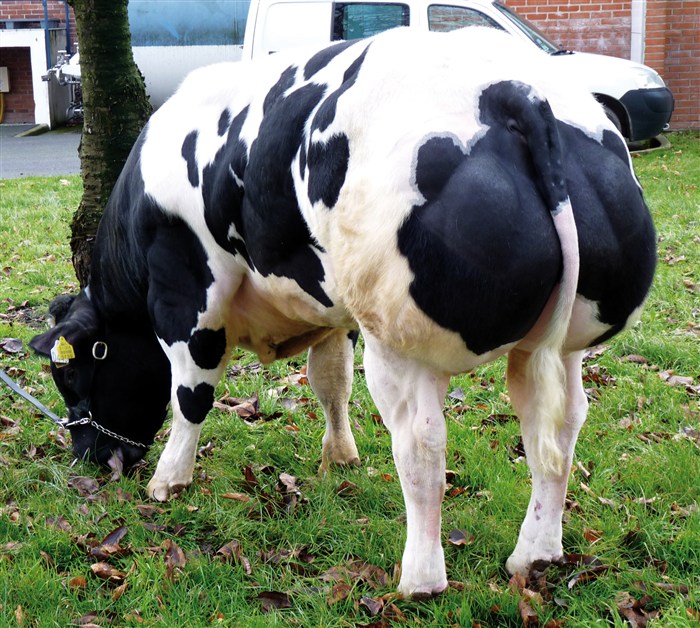Artificial Insemination Products
La Gantoise is a family enterprise devoted to breeding and importing Belgian Blue Breed / Blanc Bleu Belge (BBB) cattle. We have been in business since 1983, and our farm has supplied most of the National Grand Champions in North America!
Registered Cattle
All La Gantoise Inc. cattle is registered with the Canadian Belgian Blue Association, a member of the International Belgian Blue Association. Our animals are eligible for entry into ALL herd books. Please contact us to obtain your updated livestock list.
Embryos, Cattle and Semen
As available stock changes constantly, please contact us to find out what is currently available. Our exclusive Belgian Blue donor cows are collected on a regular basis.
Semen Sales
If you would like more information on pedigrees, linear classification and indexes, consult www.awenet.be and www.hbbbb.be
All semen is stored and distributed by
Reproduction Enterprises, Inc 908 N. Prairie Road
Stillwater, OK
Tel (US toll free): (877) 525-8037
Tel: (405) 377-8037
Fax: (405) 377-4541
www.reproductionenterprises.com
No minium order is required. Semen is shipped UPS & COD. Handling charge applies.
All semen is stored and distributed by
La Gantoise Inc
1489 Concession 1
Lefaivre, ON K0B 1J0
Tel: ( 613) 679-4133
Fax: (613) 679-4061
info@lagantoise.com

Find a Bull
Visit our Bull Catalogue to find the right bull for your breeding needs
Use a Progeny Tested Belgian Blue Bull for all your breeding programs
Belgian Blue’s Expected Progeny Indexes.
What they mean. How to use them
The vast majority of beef cattle in Belgium belong to the Belgian Blue Breed and a large number of them are spread over a small territory. Farms are visited on a regular basis by evaluators from the Breed Association who measures and observe a number of characteristics on all animals resulting for the use of AI bulls. The data is analyzed and the results published by the Belgian Herd book.
The Progeny Test is done in 2 phases. A first set of data is collected after birth and a second set at 12 month of age.
The genetic evaluation is done by used a mixed linear model called Best Linear Unbiased Prediction (BLUP) which was developed at Cornell University (NY). The results represent the improvements (or regressions) expected for the offspring of a bull (Expected Progeny Differences or EPD).
All values are indexed with 100 being the average. If the EPD has a positive value, the index is greater than 100; if the value is negative, the index is lower than 100. To calculate the index (value of a certain trait) the standard deviation has been given a value of 10 index points. Therefore, an index that deviates more than 10 points from the average for a particular trait will indicate that the bull is a significant modifier of that trait. Every index has also a value for accuracy (Acc.) which indicates the exactness of the index.
Accuracy is given by value between 0 and 1. The closer the value to 1, the more accurate the index. Minimum for publishing is 0.70 Accuracy values are usually high due to the simple fact that Belgium has one of the highest usages of AI on beef cattle. More than 50 % of all beef cows are bred AI. This gives a large number of offsprings spread over many different herds.
Indexes and crossbreeding
All data on this web site are collected from fullblood animals. Research shows that the results obtained for fullblood Belgian Blue Bulls are also applicable when those bulls are used for crossbreeding with dairy or beef. It is now generally accepted that difficult births are not a more present when crossbreeding Belgian Blue to produce F1s. Well muscled bulls with good growing performances can be selected for those larger framed easy calving cows.
Birth Weight
All bulls with an index of 100 will give average birth weight calves. In 2007, average birth weight of Belgian Blue calves, born and measured under the EPD program was 44.90 kg or 98.7 lb. Every index point below (or above) 100 equals an expected birth weight decrease (or increase) of 0.53 lb. Purebred breeders wanting to develop this character in their herd should consider this trait carefully. In crossbreeding, bulls with values superior to 100 should be used on well developed cows.
Yearling Weight
This figure reflects the growth that can be expected from the progeny of a bull. The yearling weight is economically very important because it is the best indicator of the growth rate of the animal from birth to slaughter.
Yearling Height
This measure reflects the height on the shoulders expected for the offspring of the bull. This figure is of little economical importance in crossbreeding. However, for the stockbreeder it is an important indicator. One should keep in mind that the double muscling, which characterizes the Belgian Blue Breed, has a tendency of stunting the animal. Stock breeders wanting to maintain good height in their herd should keep this in mind.
Muscle / Type Index
Type in the Belgian Blue Breed has always been closely associated to the market value of the animal. Muscling/Type is influenced by factors like mass, thickness, bone structure, thickness of the hide, head size etc…, all factors that will have a direct influence on the dressing out percentage and the cutability (net meat yield). Muscling/Type index is therefore a reflection of both market value and true type.
